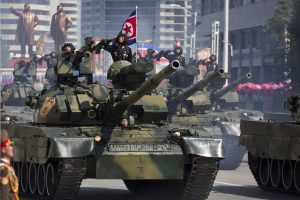For many, North Korea (or the DPRK) has become inextricably entangled with the topic of its nuclear weapons program. Nukes, and the strategic rocket forces responsible for delivering them, have dominated headlines associated with the country for decades.
Conventional military abilities, however, are a topic most are happy to avoid, and for good reason. Not only is North Korea notoriously secretive about any and all matters related to its military, it is peculiarly insistent on producing practically all of its equipment indigenously as part of its ideology of “juche,” or self reliance. This often makes assessing its equipment holdings and capabilities challenging, if not downright impossible. Furthermore, in an implicit acknowledgement of its inability to match its foes in expenditures or technological sophistication, the DPRK employs a number of unorthodox strategies to keep its military in a fighting condition, and relies heavily on asymmetric warfare to skew the balance of power during hostilities. These factors throw up still more uncertainty to which the large number of conflicting reports about the Korean People’s Army (KPA)’s operational status indubitably owe their origin.
Nevertheless, the advent of new means of communication in the modern era has facilitated a much greater flow of information out of the reclusive nation, through both propaganda and more subversive means. The picture that is formed through analysis of this information is complex, and significantly more nuanced than what could ever be contained in a single column. Instead, we can attempt a more modest review of North Korea’s armed forces, and ask ourselves: “How would events unfold, if the DPRK managed to initiate a non-nuclear conflict today?”
The question alone presumes a certain amount of divergence from current reality. First off, a full-scale mobilization of the KPA is unlikely to go unnoticed, meaning the opposing side could begin dismantling North Korean attacking columns even before they have finished forming. But perhaps more importantly, an unprovoked invasion of the South may well provoke a nuclear attack from the United States – which reserves the right to perform a first strike against nuclear weapons states. Still, the very event of a conflict itself implies the unexpected has happened, and those that neglect the possibility of a conventional war on the peninsula may end up on the wrong side of history when the unthinkable becomes reality.































